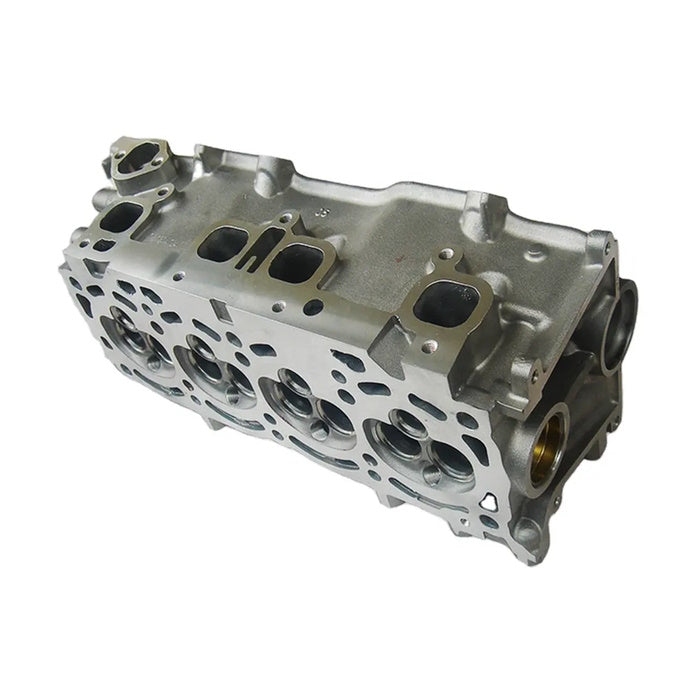Toyota Tazz: An Affordable Car That Doesn’t Compromise on Quality
Toyota Tazz: An Affordable Car That Doesn’t Compromise on Quality
Blog Article
Discover the most recent Fads in Engine Innovation With Tazz
In the rapidly evolving landscape of automotive modern technology, Tazz stands at the center, highlighting substantial improvements in engine systems that prioritize both innovation and sustainability. From crossbreed engines that maximize fuel efficiency to the emergence of hydrogen gas cells, the patterns shaping modern powertrains are not just improving performance yet additionally dealing with vital environmental obstacles.
Hybrid Engine Innovations
Hybrid engine technologies represent a pivotal change in automobile technology, incorporating the benefits of inner combustion engines with electrical propulsion systems. This combination not only boosts fuel performance however additionally minimizes emissions, conference increasingly rigorous environmental laws. By using both power sources, hybrid engines can maximize performance, supplying power when needed while saving fuel during much less demanding motoring conditions.
Recent innovations in hybrid modern technology include enhancements in battery efficiency and regenerative braking systems. These technologies enable higher power recovery throughout slowdown, which can be redirected to help in velocity or power auxiliary systems. Moreover, manufacturers are concentrating on light-weight products and small designs to maximize the efficiency of hybrid powertrains.
The development of plug-in hybrids has likewise increased the marketplace, making it possible for drivers to charge their cars utilizing common electric outlets. This attribute often permits significant all-electric range, further decreasing reliance on conventional fuels. tazz. As the automobile market remains to develop, hybrid engine innovations are expected to play a vital duty in linking the space between standard cars and totally electric models, offering a transitional service that provides to varied consumer requirements and preferences
Advances in Electric Powertrains
The automotive landscape is swiftly advancing, with electrical powertrains arising as a leading force in sustainable transport. Breakthroughs in electric car (EV) technology are significantly enhancing efficiency, individual, and effectiveness experience. Trick advancements include renovations in battery chemistry, which have increased power density, minimized charging times, and expanded general battery life.
Solid-state batteries, for example, guarantee to transform the marketplace by offering better security and performance compared to traditional lithium-ion cells. Moreover, developments in regenerative stopping systems are enabling lorries to recover power during deceleration, adding to overall performance.
Along with battery innovation, electrical motor designs are ending up being extra sophisticated. Advancements such as incorporated electric motors and advanced thermal administration systems are assisting to enhance power distribution and reduce weight, eventually improving lorry dynamics.

Jointly, these breakthroughs emphasize the dedication to shift towards cleaner, much more efficient transportation solutions, placing electrical powertrains at the leading edge of automobile development.
The Rise of Hydrogen Gas Cells
Significantly, hydrogen gas cells are getting traction as a viable choice to typical interior combustion engines and battery electric lorries. This modern technology takes advantage of the chemical energy stored in hydrogen, transforming it into electrical power through an electrochemical response with oxygen. The main result of this process is water, making hydrogen fuel cells an eco-friendly alternative with no emissions at the tailpipe.

Car manufacturers are progressively purchasing hydrogen gas cell technology, recognizing its capacity for long-range applications and quick refueling capacities that rival traditional gas. In addition, industries such as durable transportation and public transportation are specifically well-suited for hydrogen fuel cells, where battery electric services may fail because of weight and array constraints.
As study and financial investment continue to look at this site expand, hydrogen fuel cells are poised to play a significant role in the future landscape of clean transportation and energy solutions.
Enhancements in Internal Combustion Engines
Developments in internal combustion engine (ICE) technology are transforming conventional cars to meet modern environmental standards and efficiency assumptions. Among one of the most considerable enhancements involves the integration of advanced gas shot systems. These systems enhance the air-fuel blend, enhancing combustion efficiency and resulting in lowered exhausts. Straight fuel injection, for circumstances, enables much better atomization of fuel, leading to even more full combustion and enhanced power output.
Furthermore, turbocharging has obtained importance, allowing smaller sized engines to deliver greater performance without the weight of bigger engines - tazz. This technology not just increases performance however additionally adds to lower fuel consumption. Variable valve timing systems are additionally being fine-tuned, enabling engines to adapt to numerous driving conditions for boosted torque and responsiveness
Furthermore, the usage of lightweight products in engine building is coming to be conventional, more enhancing gas efficiency by minimizing overall automobile weight. Engine control devices (ECUs) are progressively innovative, enabling real-time modifications that maximize performance and discharges.
These improvements collectively represent a crucial shift in ICE innovation, straightening with global sustainability goals while still giving the performance motorists get out of their automobiles. As the sector evolves, these improvements remain to form the future of conventional vehicle engineering.
Future Patterns in Engine Effectiveness
Substantial developments in engine effectiveness are prepared for as makers concentrate on incorporating cutting-edge technologies to satisfy rigid ecological regulations and consumer needs. The change towards electrification, hybrid systems, and alternative fuels is improving the auto landscape, click to find out more driving technologies that enhance fuel economic climate and minimize emissions.
One of the crucial trends is the application of innovative products and making strategies. Lightweight composites and high-strength alloys add to minimized automobile weight, hence enhancing general effectiveness. In addition, the fostering of turbocharging and variable shutoff timing innovations enables improved power output from smaller sized engines, additionally improving fuel economy.

Final Thought
To conclude, the expedition of engine technology exposes significant improvements that prioritize sustainability and effectiveness. Innovations in crossbreed engine systems, electrical powertrains, and hydrogen fuel cells show a commitment to minimizing discharges while boosting performance. In addition, improvements in interior burning engines and a focus on light-weight products contribute to general engine performance. As the automotive industry remains to advance, these trends will play a critical role fit a cleaner and even more lasting future for transport.
From crossbreed engines that maximize gas effectiveness to the emergence of hydrogen fuel cells, the patterns shaping modern-day powertrains are not just boosting performance but likewise attending to essential environmental obstacles.Crossbreed engine innovations stand for an essential read this article shift in automobile technology, combining the advantages of interior burning engines with electrical propulsion systems.Furthermore, turbocharging has gained prestige, enabling smaller engines to supply higher performance without the weight of bigger engines. In addition, the fostering of turbocharging and variable valve timing innovations allows for boosted power outcome from smaller sized engines, even more enhancing gas economy.
Improvements in interior burning engines and an emphasis on lightweight products add to total engine performance.
Report this page